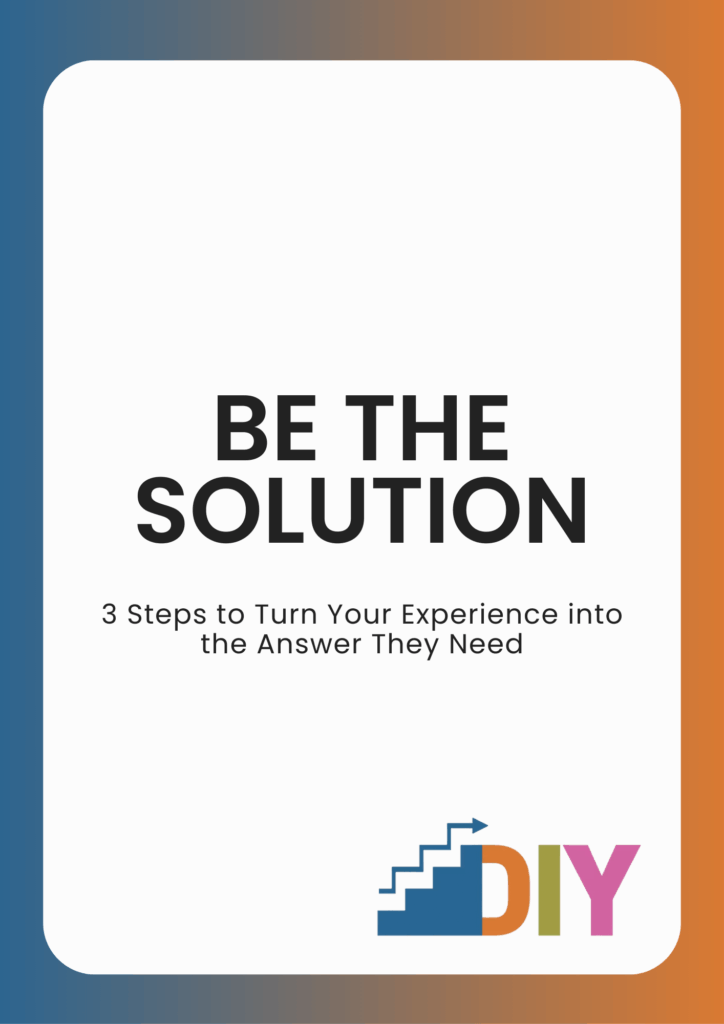You’re Not a Candidate. You’re the Fix.
As someone who’s interviewed thousands of candidates over the years, I can tell you: how someone approaches the interview often decides the outcome before it even begins. Most people treat it like a performance. They rehearse answers, memorize resume lines, worry about what to wear—and then spiral trying to anticipate not just the questions, but how every word and gesture might be judged. I’ve seen people break out in hives under that pressure. And honestly, it is heartbreaking.
But it doesn’t have to be that way. Here’s what they miss: this isn’t an audition. It’s a conversation between two professionals. Sure, the interviewer has a job the candidate wants. But they also have a problem they need solved urgently. It’s not just about whether you’re right for the job. It’s also about whether the job is right for you. That shift in mindset can change everything.
If your goal is to blend in with every other qualified applicant, you better start rehearsing your lines. But if you want to stand out and land the job, change your mindset: you’re not a candidate. You’re a solution.

Every job exists for one reason: there’s a problem the company needs solved. That problem could be slow growth, a broken process, missed revenue targets, or a team lacking key skills. Whatever it is, your job in the interview is to show that you understand the problem, and that you are the fix.
Step 1: Find the Real Problem Behind the Job Posting
Most job descriptions are just symptoms. Read between the lines. Ask: Why does this job exist?If this job didn’t exist, what kind of mess would be left behind? How would it hamper the success of the company? What pain is the team feeling? What does success look like for the person who gets hired?
Use the job posting as your first clue. Look at the responsibilities and required experience. Then dig deeper:
- Research the company’s recent news, goals, and challenges.
- Check the team or department this role sits in. What are they trying to achieve?
- If possible, talk to someone in a similar role or company.
By the time you walk into the interview, you should know more than just what the job is. You should know why it exists.
Step 2: Tailor Every Answer to Position Yourself as the Fix
When you’re asked a question, don’t just talk about yourself or repeat what’s already on your resume. Your job is to build the bridge, connecting your experience and strengths directly to how you’ll not just handle the tasks, but elevate the role and solve the company’s real problem.
“Tell me about yourself?” Start by giving a glimpse of who you are as a person, then quickly lead into the value you bring. Connect the dots between the experiences you’ve built, the problems you’ve solved, and how they align directly with what the company is trying to achieve.
“What are your strengths?” These are the strengths that directly solve the challenges this role is facing.
“Describe a time you overcame a challenge?” Find a challenge that is similar to one that you believe the company is facing. Describe how you handled it so they understand that you will bring the same skill to this situation.
Every answer is a pitch. The product is you. The value prop? You make their problem go away.
Step 3: Build Proof Points from the Job Description
Take each core responsibility listed in the job description. For each one, develop a specific example from your past that proves you’ve done it, or something very close to it. This will help you answer the technical questions about executing the job.
- If the role mentions “streamlining operations” come with a story about how you cut inefficiencies.
- If it calls for cross-functional collaboration, show where you successfully worked across teams.
Don’t just say you have the skills. Prove it with results. Metrics, outcomes, before-and-afters. Those are your receipts.
Real Story:
From Stalled Search to Offer Letter
One of my clients had been in a tough job search for a while. He was also trying to break out of an industry that wasn’t thriving in the current economy. He finally landed an interview and made it to the final round; one of two candidates still in the running.
At the end of the process, the hiring manager asked if he had any final comments or questions. Instead of a standard thank-you note, he sent an email that flipped the script. He didn’t just express interest. He demonstrated that he understood the true purpose of the role. He mapped his experience from a different industry directly to the company’s pain points. And he made a clear case for how he could not only succeed in the role but level it up.
He got the job.
Why? Because he didn’t just position himself as a good fit. He positioned himself as the answer.
Don’t Love Social Media? You’re Not Alone.
You don’t have to post daily. You don’t need to be on video. You don’t need to chase likes or trends. Here’s how to get noticed without burning out or becoming someone you’re not.
01
Let Your Work Do the Talking
Create a clean, easy-to-navigate portfolio, website, or LinkedIn profile that highlights what you
do. Include:
- Case studies or project snapshots
- Testimonials or recommendations
- Results you’ve delivered
If you say nothing else, let your work say it all.
02
Talk About the Problems You Solve
This is key. Don’t just list job titles—show what you’re good at and how you think.
Example: “I help teams streamline operations with better systems—cutting admin time by 40%.”
Be specific. Be relevant. Employers want problem-solvers, not just job seekers.
03
Write Instead of Perform
Not into video? Cool. Focus on writing:
- Thoughtful LinkedIn posts
- A short blog or article
- A Medium or Substack piece on your field
Writing is powerful. It shows how you think, what you care about, and what you know.
04
Pick the Right Platforms
You don’t need to be everywhere. Just choose where your target audience (aka employers or
peers in your field) hang out.
Good options:
- LinkedIn (non-negotiable for most professionals)
- Medium/Substack (great for written insights)
- Portfolio site (especially for creative or tech roles)
- Relevant online communities (Slack groups, Reddit, etc.)
Quiet corners > noisy platforms.
05
Automate and Repurpose
If you’re creating content, don’t overthink it. Write once, then re-use:
- A LinkedIn post becomes a blog
- A blog becomes a short video script
- A framework you share becomes a downloadable PDF
Batch it. Schedule it. Don’t live online—just show up with intention.
06
Set Boundaries
You don’t need to be “on” all the time. Define your pace:
- One LinkedIn post a week
- 15 minutes of networking a day
- A monthly article or update
Consistency beats volume. Show up regularly, not constantly.
You're Not Selling Yourself.
You're Solving for Them.
Companies don’t hire resumes. They hire results. Your goal in the interview isn’t to impress them, it’s to make them see that not hiring you is a missed opportunity.
Prep with that mindset, and you’ll do more than answer questions. You’ll make your value undeniable.
